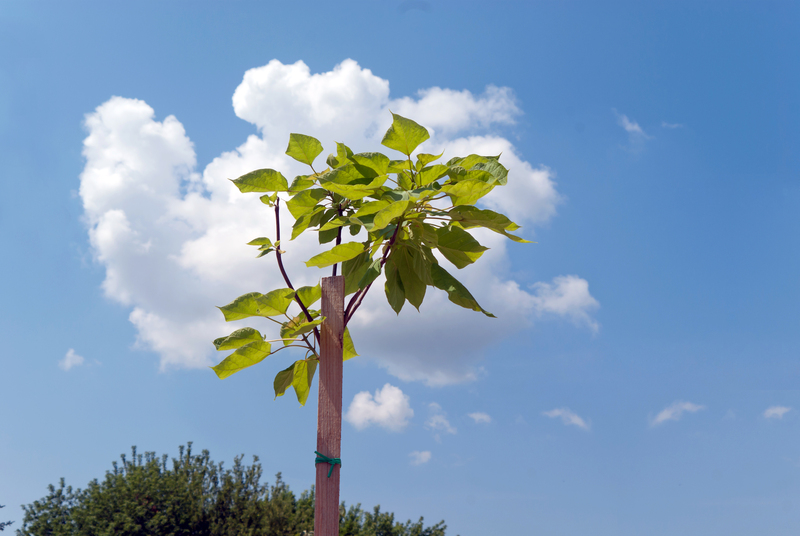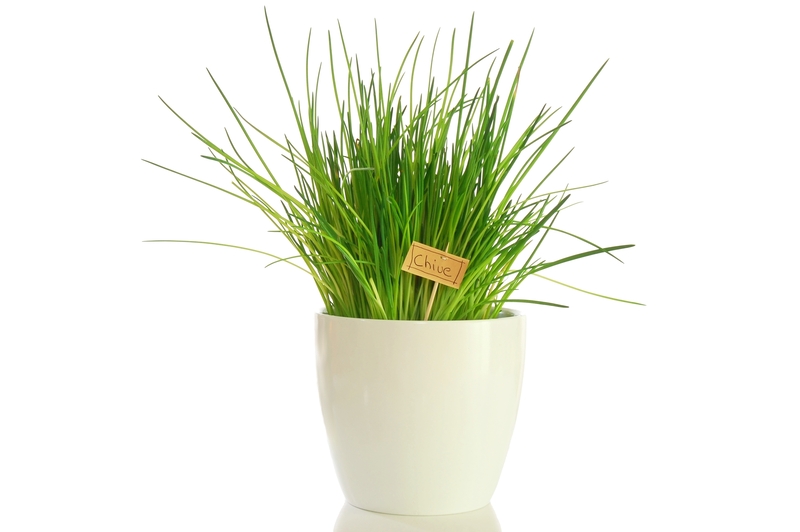Journey to Serenity: Revamping a Forgotten Garden
Posted on 22/06/2025
Journey to Serenity: Revamping a Forgotten Garden
Envision a peaceful oasis where time slows, nature thrives, and harmony is restored. Such is the promise that lies beneath the tangled weeds and faded memories of a neglected outdoor space. Embarking on the journey to serenity through the process of revamping a forgotten garden is both a rewarding project and a transformative experience for homeowners, garden enthusiasts, and anyone craving a tranquil sanctuary in their daily life.
Rediscovering the Forgotten: The First Steps to Garden Serenity
Every revitalization story begins with understanding its past. Forgotten gardens often hold secrets -- remnants of their prime, their unique personality, and the hopes of those who once tended them. Revitalizing an abandoned garden is not just about new blossoms and lush lawns; it's about restoring character, inviting nature back in, and achieving a profound sense of peace.
Why Restore a Neglected Garden?
- Reconnect with nature by creating a tranquil retreat on your property.
- Boost your home's value with well-designed landscaping.
- Support local biodiversity by planting native species and flowers.
- Foster a therapeutic environment for relaxation and mindfulness.
- Preserve history and restore the forgotten charm of your outdoor space.

Assessing the Canvas: Understanding Your Forgotten Garden
Before embarking on your serenity garden project, assess what you have. Much like an artist before painting, take time to observe, document, and envision your future paradise. Here's how to get started:
Step 1: Conduct a Garden Audit
- Identify existing plants -- which ones can be saved, relocated, or must be removed?
- Evaluate soil quality and drainage patterns. Healthy soil is the foundation for a vibrant garden.
- Check structures like fences, benches, trellises, or water features for repair or replacement needs.
- Observe sunlight -- note shaded and sunny spots, which will influence plant choices.
Step 2: Draw Inspiration
- Explore garden magazines, Pinterest boards, and public parks for fresh design ideas.
- Sketch a simple map that marks out existing features and your envisioned areas of interest.
- Consider the mood you want to evoke -- peaceful Japanese Zen, English cottage, or a native wildflower meadow?
Designing Your Path to Tranquility
Converting an overgrown lot into a serenity-focused garden requires thoughtful planning. Every harmonious space, small or large, balances beauty, utility, and low-maintenance. Below are design essentials for a successful forgotten garden transformation:
1. Create a Focal Point
Focal points, such as a graceful bench, small fountain, or a sculptural tree, draw the eye and encourage reflection. Use symmetry in formal gardens or embrace meandering lines in casual settings for a natural-feeling retreat.
2. Layer with Texture and Color
- Plant in layers: Combine tall shrubs at the back, perennials in the middle, and groundcovers up front.
- Mix foliage in varying shades of green, silver, maroon, and even blue for year-round interest.
- Use seasonal blooms like tulips, lavender, and autumn sedum for continual vibrancy.
3. Design Paths and Borders
Curved pathways made of natural stone, gravel, or wood chips guide visitors on a journey to garden tranquility. Edging with bricks or lush hedges adds definition and order.
4. Plan for Privacy
- Strategically plant hedges, bamboo, or trellises with climbing roses for screening.
- Use existing structures to block views of neighboring properties, enhancing peace and seclusion.
5. Add Water and Sound
Even a small bubbling fountain introduces soothing sounds and attracts wildlife. Still ponds, meanwhile, create mirrored surfaces and a sense of depth.
Step-by-Step: Bringing Life Back to Your Forgotten Garden
Step 1: Clearing and Cleaning
- Remove debris such as old branches, trash, and broken pots.
- Prune overgrown shrubs carefully -- sometimes a good cut is all they need to thrive again.
- Weed thoroughly to reduce competition for nutrients.
- Preserve or gently transplant any healthy, existing plants worth rescuing.
Step 2: Soil Revitalization
- Test your soil for nutrients, pH, and texture.
- Add compost, well-rotted manure, or organic mulch to revive depleted earth.
- Improve drainage by loosening compacted areas with a garden fork or tiller.
Step 3: Plant Selection and Placement
Choose plants that thrive in your climate and suit your gardening style and maintenance preferences:
- Perennials like hostas, daylilies, and peonies return each year with minimal effort.
- Evergreens ensure structure in winter months.
- Native species attract birds, bees, and butterflies, supporting local ecology.
Arrange them in groups for visual impact and to mimic natural landscapes.
Step 4: Hardscaping Improvements
- Replace, repair, or install pathways, patios, and seating nooks.
- Consider creating raised beds for easier access and enhanced control of soil quality.
- Add decorative elements such as lanterns, wind chimes, or birdbaths for a personal touch.
Step 5: Ongoing Maintenance for Lasting Serenity
- Mulch regularly to suppress weeds and conserve moisture.
- Adopt sustainable watering habits--install drip systems or a rain barrel if possible.
- Prune as needed to maintain form and health without sacrificing the garden's natural feel.
- Seasonally refresh annuals and check for pests or plant diseases.
The Psychological Benefits of a Revamped Serenity Garden
Studies show that time spent in tranquil gardens reduces stress, improves mood, and enhances overall well-being. A forgotten garden revived as a sanctuary nurtures not only plants but the soul, offering a retreat for meditation, reading, entertaining, or simple contemplation.
Key Wellness Benefits Include:
- Stress Relief: Immersion in greenery and soothing sounds lower cortisol levels.
- Creative Inspiration: Color, texture, and natural shapes spark artistic energy.
- Physical Health: Gardening is moderate exercise that fosters flexibility, balance, and strength.
- Mindfulness and Meditation: Quiet time among the blooms sharpens attention and cultivates gratitude.
Inspiring Case Study: A Real-Life Forgotten Garden Revival
Take, for instance, the story of Maria, who inherited her grandmother's long-neglected courtyard. Where brambles choked former rosebeds and cracked tiles littered the path, she saw possibility. With a vision of creating her own garden of serenity, Maria:
- Rescued historic perennials from beneath weeds
- Layered new soil and compost for rich, fertile beds
- Introduced a meandering pebble path with solar lanterns to light twilight strolls
- Installed a bubbling urn fountain for calming sound
- Added a secluded bench beneath a blooming wisteria arbor
The transformation not only revived the space but brought her family and neighbors together, healing old wounds and nurturing new connections.
Sustainable Gardening: Ensuring Serenity for the Future
A truly serene garden cares for the broader environment as much as it soothes its visitors. As you plan your revitalized garden retreat, consider sustainable strategies:
- Plant native flowers and shrubs to reduce water and fertilizer needs.
- Compost garden and kitchen waste to feed your soil naturally.
- Utilize rainwater harvesting and efficient irrigation to conserve resources.
- Opt for eco-friendly materials in hardscaping and garden furniture.
The Role of Biodiversity in a Serene Landscape
Encouraging pollinators and beneficial insects by including a variety of plants ensures a healthy, resilient garden ecosystem. Add birdhouses, bee hotels, or a small pond to invite garden allies and increase your oasis's vitality.

Expert Advice: Tips for a Successful Garden Makeover
- Start Small: Tackle one section at a time to avoid feeling overwhelmed.
- Be Patient: Gardens are living art--growth and maturity take time.
- Document Your Progress: Photos and notes encourage reflection and help plan next stages.
- Enlist Help: Friends, family, or local gardening clubs can provide support, ideas, and motivation.
Conclusion: Creating Your Own Journey to Serenity
Revamping a forgotten garden is more than a landscape project; it is an invitation to cultivate beauty, serenity, and connection--both with the land and within yourself. By honoring the past, embracing the present, and sowing seeds for a sustainable future, you transform not just dirt and weeds but your daily experience.
Whether you seek a quiet nook for meditation, a lush haven for wildlife, or a vibrant space for gatherings, your journey to serenity begins when you step outside and imagine the possibilities. With vision, patience, and care, your forgotten garden becomes a living poem--one that soothes, delights, and inspires for years to come.
Let today be the first step on your own path to serenity by breathing life into a forgotten garden--and watch as tranquility blooms right before your eyes.

